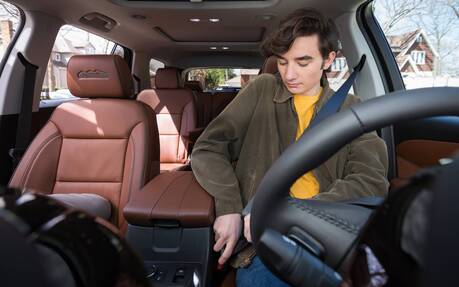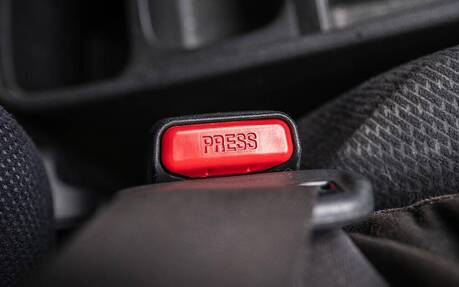Automakers Must Improve Seat Belt Reminders, IIHS Warns
Even in 2022, not all car drivers buckle up before hitting the road. And unfortunately, the seat belt reminders designed to address that don’t prove effective enough, according to the U.S. Insurance Institute for Highway Safety (IIHS).
The American watchdog says almost half of the drivers and front seat passengers killed in crashes in 2019 weren’t belted, but some of its previous research has shown that more noticeable and persistent alerts could increase belt use among those who do not routinely buckle up by as much as 34 percent, preventing an estimated 1,500 fatalities a year on U.S. roads.
- Also: Chevrolet’s Clever New Trick to Help Teens Buckle up
- Also: MPI Study: Rural Manitobans Buckle Up Less, Winnipeggers Get Distracted
In order to encourage automakers to adopt more effective and consistent standards, the IIHS has developed a testing protocol that rates seat belt reminders as good, acceptable, marginal or poor, based primarily on the volume, duration and timing of the audible alert. For a good rating, the system must generate an audible signal and visual alert when the vehicle is moving at least 10 km/h and an unbelted occupant is sitting in one of the front-row seats.
Also, the audible alert must be loud enough to be heard over the background noise in the vehicle cabin. If the seat belt of an occupied front-row seat remains unbuckled, the visual and audible reminders must last at least 90 seconds. If a previously fastened second-row belt is unbuckled, the reminders must last at least 30 seconds.

Only Two SUVs Get a Good Rating
For its first series of tests, the IIHS evaluated 26 compact and midsize SUVs. Only two of them, the Subaru Ascent and Forester, earned a good rating. Five were deemed acceptable: the Hyundai Palisade and Tucson along with the Nissan Murano, Pathfinder and Rogue.
Seven more were rated marginal: Jeep Compass, Renegade and Wrangler, Mazda CX-5 and CX-9, Toyota RAV4 and Highlander. Finally, the IIHS gave a poor rating to the Audi Q3, Buick Encore, Chevrolet Equinox and Traverse, Ford Escape and Explorer, Honda CR-V, HR-V and Pilot, Mitsubishi Eclipse Cross, Volkswagen Atlas and Volvo XC40. Several of those will be completely redesigned soon, mind you.
In the Mitsubishi Eclipse Cross, for example, there is no audible alert when the front passenger’s belt is unbuckled, just a visual icon. In the case of the Honda HR-V, the alert for the driver is barely audible above the ambient cabin noise and lasts a mere five seconds. Around 25 seconds later, the chime sounds for another five seconds, and this goes on for two minutes. The red icon in the instrument cluster remains illuminated, however.
On the other hand, in the Subaru Ascent and Forester, the chime seems twice as loud and does not stop chirping until the driver is buckled in.

Easy to Fix
Some simple software adjustments could probably lift all of the marginal and some of the poor performers to an acceptable rating, the organization claims.
“The gold standard is an alert that’s impossible to ignore,” says IIHS Senior Test Coordinator Sean O’Malley. “Most of these problems don’t require new hardware. Even among the vehicles that earn poor ratings, it’s possible that simply lengthening the duration of the audible alert could do the trick.”
